Joe’s trains kept stopping at the turnouts/points – but a capacitor for model trains instantly solved the problem:
“Hi Alistair,
I do not know if model railroaders out there have had this problem?
After I had completed my installation of DCC wiring, I noticed that while running my 0-6-0 LINER 9833, it continued to stop at all points?
I did not have this problem with my Mallard 4-6-2 due to its length. I tried everything from cleaning track, cleaning engine wheels, checking the pick-ups if they are not touching all the wheels, are the turnout blades making good electrical contact with the stock rails and are the points laid flat. These could also have an effect on running short wheelbase locos.
After this, I still had problems and the stopping was not corrected. So I went to my local hobby shop and they suggested a “Keep Alive” capacitor. I had it installed and it works like a charm over every point. I hope this helps someone who might have the same problem.
While I was completing my layout of the High Street (pictures coming soon) and installing “just plug” lighting, I happened to come upon some old die cast kits. I had purchased these over 30 years ago while living in London and had forgotten about them.
So I decided, to stop what I was doing and start putting these cars together. I guess that’s my Gemini sign going from one project to the other without completing each. Because of the soft metal, there were many areas to be filed down smooth, painted, apply decals and properly fit every piece together. It took many, many hours but worth it and fun.
One below is the 1934 Austin “Low loader” cab. I added a drivers to both taxis to add realism.
The second die cast was a FX4 taxi introduced in 1958 and was the first production model London taxi with four doors, previously, the space next the driver was open for large luggage as seen on the previous models. Both models were purchased for no more than 3 1/2 pounds in 1987.
Joe”
A huge thanks to Joe for sharing how his capacitor for model trains sorted out his issue – I do enjoy seeing how folk get round the problems that their layouts throw at them.
If you look at Joe’s previous post, you can see how he solved the problem of getting underneath his layout. It’s genius.
That’s all for today folks.
Please do keep ’em coming.
And don’t forget the Beginner’s Guide, if today is the day you stop dreaming and start doing.
Best
Al
Latest ebay cheat sheet is here.
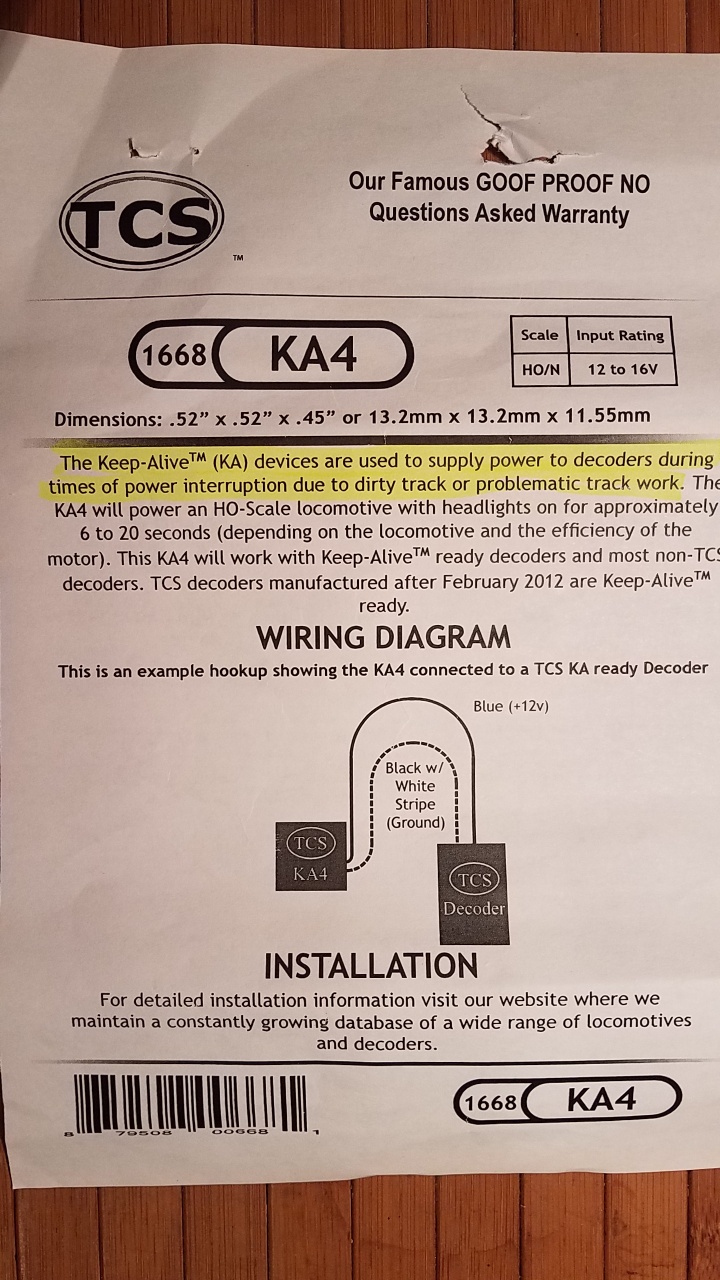
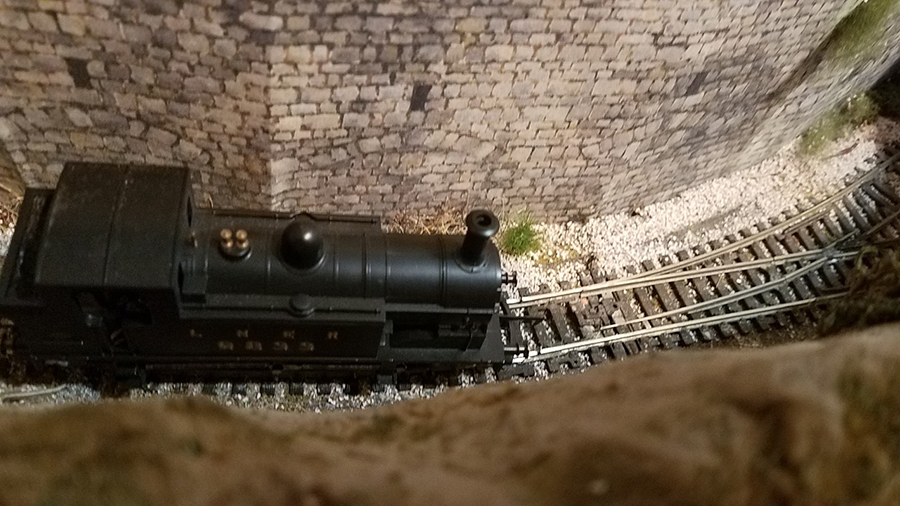
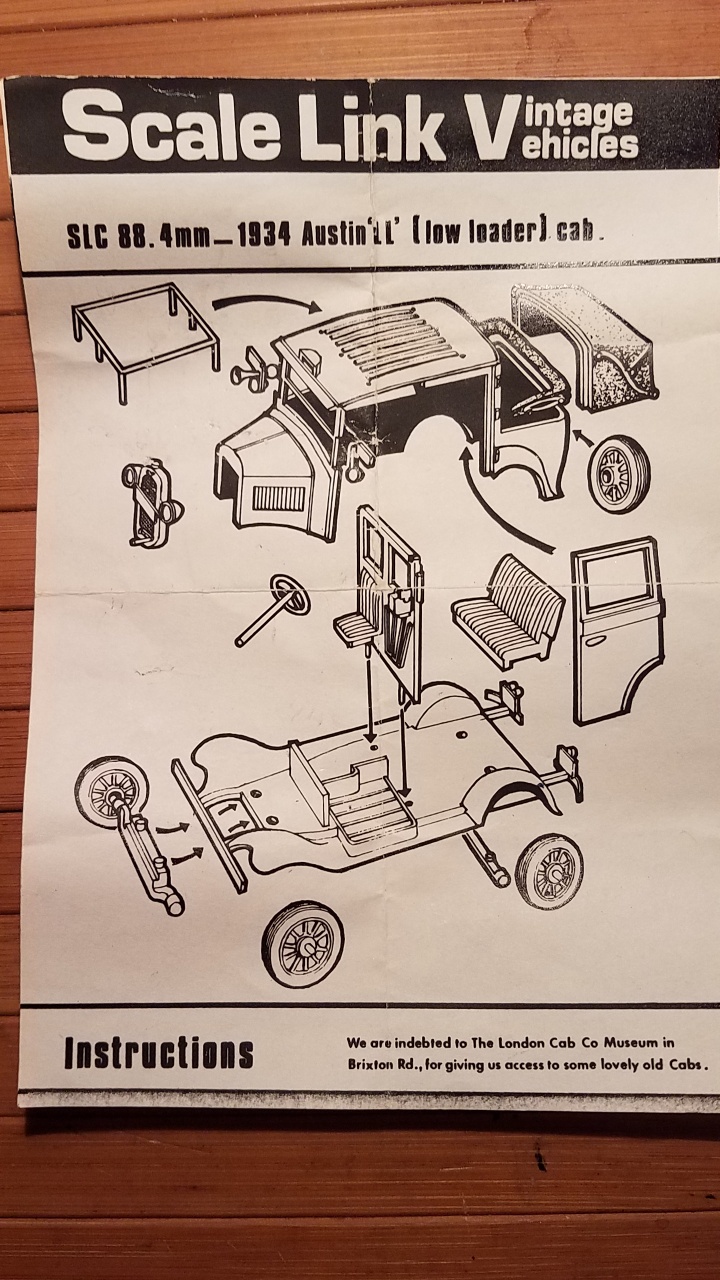
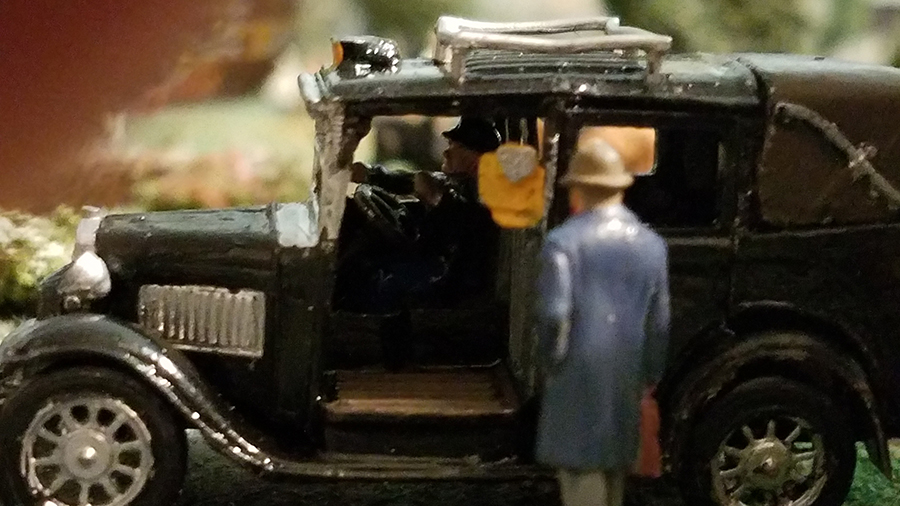
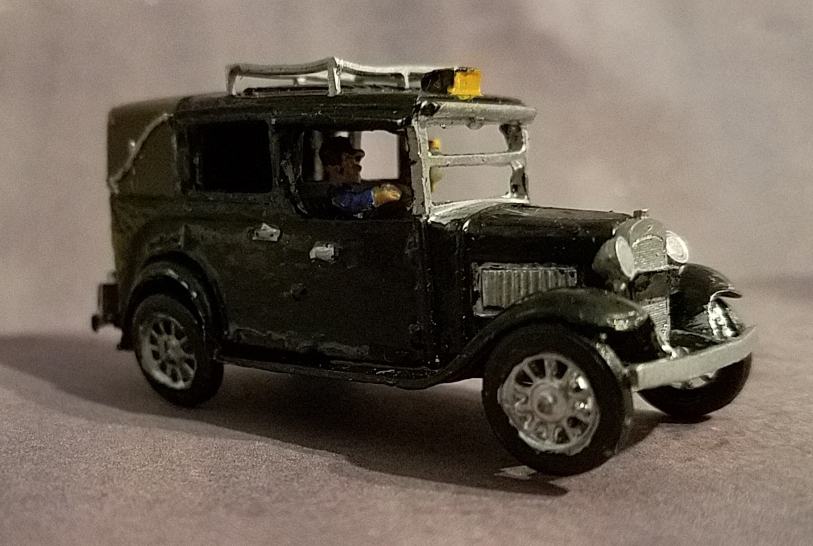
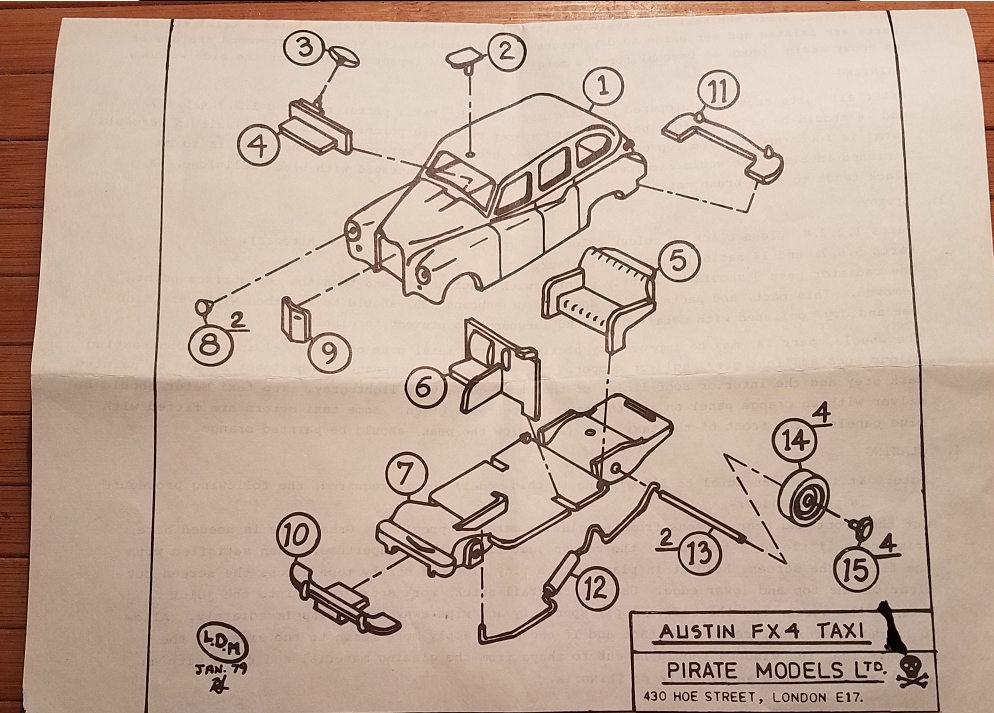
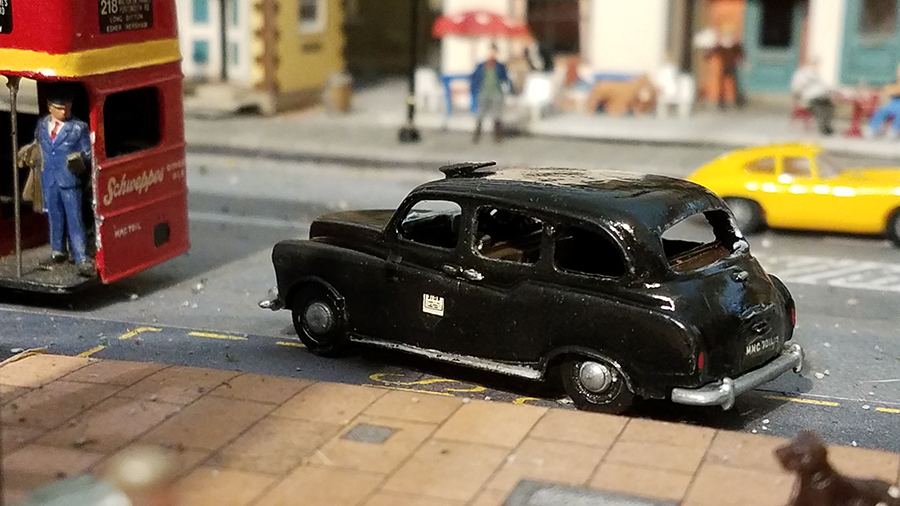
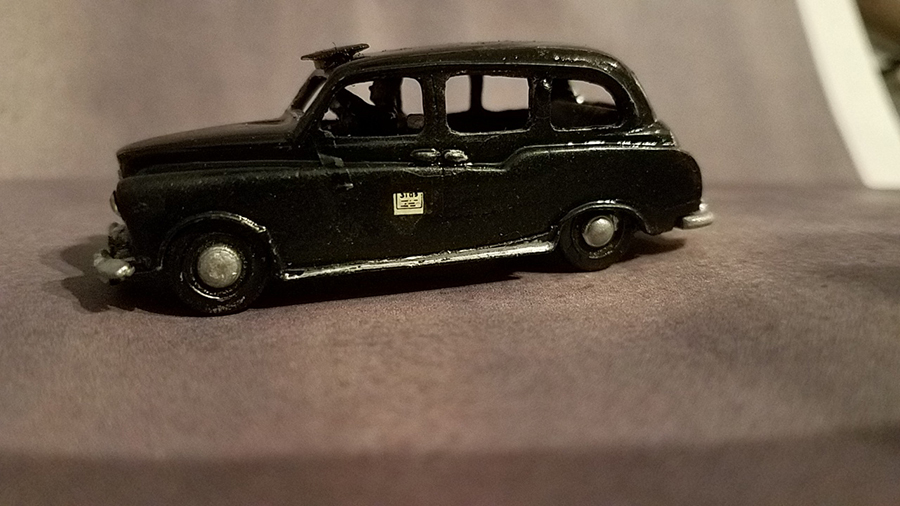


arer there any lionel postwar 3-rail buffs out there would like to share ideas.
You did a wonderful job. Your attention to detail is excellent! I liked your design for the under your layout chair. Thank you
Does the Capacitor have a micro-farad rating listed upon it anywhere, or does anybody have any idea what the micro-farad rating would be?
HELLO LEON ANGELO, Bill NOROSKI HERE, I’d like to hear from you
I guess I’m a 3-rail LIONEL buff from a by gone era. . WANNA SHARE IDEAS?
BILL
If a loco with properly working pickups and clean wheels stops on every turnout, I wonder whether it has a problem with the wheel back-to-back measurement on one or more axles? if the wheels are set too tight, it may be ‘climbing’ as it tries to fit through the pinch-point created by the crossing nose and the check-rail opposite. The distance between the wheel backs ought to be c. 14.5mm for OO.
Rod
To Dan: There are several manufacturers out there supplying “keep alive” products. Some of them use just a single capacitor and others wire them in series mounted on a circuit board which is then shrink wrapped to prevent short circuits. Basically use the largest mfd. capacitor with a 16 to 24 volt rating that you can fit somewhere in the engine. I have an all brass U-50 locomotive from the 1950’s that took over 8 hours to refit for DCC and added lights and sound. I wound up mounting capacitors under the engine to solve the problem of stalling at EVERY track switch no matter if it was “DCC friendly” or not. Glad now that I put the time and energy into the update. The HO scale “U-BOAT” weighs nearly three pounds and will pull a rake of cars about 80 feet long up a 2% grade over at the club Note that the loco was built BEFORE DCC was even thought of and it is one of the best running locos that I own even if the all brass gears and drive shafts are a bit noisy! Norm Lawrence in York, PA home of the “York Connecting Railroad”
Rob from Ann Arbor here. For people in the US who have the switch power issue, Tam Valley frog Juicers work great.
Nice work on the taxi…………love the detail.
It is much cheaper to add the capacitors then trying to make an older layout DCC compatible. The only draw bake is if a guest engineer wants to run his loco on your layout without a capacitor. I bought a book on DCC conversion before these capacitors were available and I was discouraged at the amount of work and cost to convert. Capacitors eliminated 80% of the book.
Hi,
I hope you might be able to help me please.
I have just purchased a brand new set of loco and 3 carriages. The loco is a hall class 4–6-0 with tender, the loco motor is in the loco not the tender.
Whilst pulling the 3 carriages on the flat there is no problem, however even the slightest incline or the addition of a 4th carriage I just have complete wheel slip.
Is thee any advice on how I can get around this problem.
Thanking you in advance
Malcolm Gregory
Hello LEON ANGELO,
I’ll join in with Bill Noroski, a 3 rail Lionel, internet friend of mine. (Hi Bill) Running four independent O gauge mainlines right now. The Pennsy is my favorite RR, (Grew up in Pgh) with steam my preference. Still running the original #726 Berkshire 2-8-4 my parents gave me for Christmas 1950. Had it refurbished about 20 yrs ago by a Certified Lionel Repairman in Pa, and she’s still running strong. Now do my own repairs as Florida has few train shops.
Be glad to help out any way I can.
I have had problems with Hornby decoders in Hornby locos, stalling on straight track. The keep alive decoder solved that. I think there are quality control issues with Hornby and Bachmann products.
Joe. Having trouble finding the web site for the keep alive capacitor. Could you please include the site in your post as I am having the same problem with some of my locos. Thanks, Bill. Kansas U S A
I’ve installed a few “keep alive” type capacitors from BLI called GoPack in some BLI diesels and they work well. The main problem is where to fit the capacitor. TCS is now providing much smaller units and will make the installation easier.
Bill. You could try on line Model Train Stuff aka. M.B. Klein or Lombard Hobbies. They are both great retailers to work with and they have a great and large inventory of products.
Jim AZ
Hay, LEON ANGELO, Dale Popula, I’d like to hear from you
I guess I’m a 3-rail LIONEL buff from a by gone era also. . What ideas would you like to share?
Malcolm Gregory
Is there any space inside the “Hall” boiler to add some lead (or a less toxic equivalent)in order to increase adhesion weight? You can buy strips of lead from aquarium suppliers – the weights are used to make plants in the aquarium sink. Fishing weights can also be used.
As it is a new loco it’s unlikely that the motor is wearing out but you might have a duff one. Do you have any really free-running coaches or wagons you can try behind the loco? It might be drag in the coaches.
Being old school I keep my DC layout going by using Relco units between each controller and the track. Has worked well for years but not good for DCC as I am told it burns out decoders. Check wheel gauge as I have had this problem with Triang stock on Peco track.
Malcolm I use lead fishing weights to improve traction but beware you can overdo it! Also check your carriage wheels as my old Halls easily pull 4 coaches without any extra lead. Cheers Kelvin
Hi Joe. ESU LOKPILOT has a similar power pack to keep the locomotive alive over troublesome sections of track. ESU even provides instructions for a “do it yourself” version with specs for the capacitor, diode and resistor to make it compatible with their brand of DCC controller. I’ve built about 30 of them for my locomotive stable and the work great! Glad the “KA” solution worked for you! Nothing more satisfying than a locomotive that keeps on chugging!
Leon, I run 3 rail O gauge Legacy. Would love to hear from you.
Adam Stein in the frozen tundra of North Dakota
I’m starting a 027 Lionel layout and I’m reconstructing some of my track to fit my layout and so far everything is working fine. I use the old Lionel 3-rail track, not the fast track, so if you have the patience, you can build your own designs for the track.
Capacitive discharge lmao. Why didn’t I think of that for trains, of coarse it would work. The jury is still out if too much capacitance can be issue in long run, may explode or short, I’m talking about the capacitors I added to my electrical service. Will sync the current with the voltage (catches it up) and usually used with electric motors. Am finding boost with clothes dryer even though, not suppose to affect resistive loads.
Yes, built panel for Power Factor Correction. Works excellent and see many instances with perfect match of 1.00, have PFC meters for each phase. And that’s a total of 70uF (micro) for entire house. Wired across phases, if connected to ground will act as lightening arrester. Have a Frankentrain layout…
Don’t try this, have had Master’s license since 24yo. Look at Amazon, sell them dime a dozen, PFC for home. Most say it’s a scam and they don’t work. Mine I even metered with discharge circuit bypass for caps and it’s for real…
rich, regarding
very nice. i like the vintage car.
Nowadays, when I have a loco that stops on curves or turnouts, the first thing I check is the pickups. Sometimes, the pickup wipers don’t reach the wheel when they are pushed to one side. Loco wheels usually have lateral movement built into them so they can negotiate tight curves and track irregularities. This can happen when they go through a point/turnout/switch too. The problem is not readily apparent unless you push the wheels side to side. It can be corrected if identified. Rob